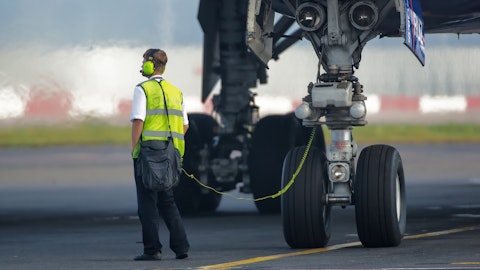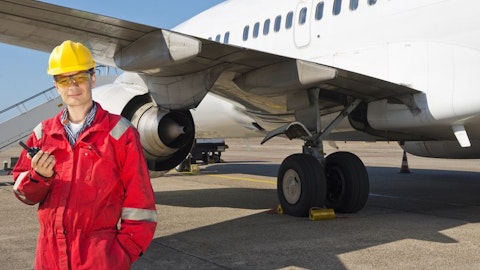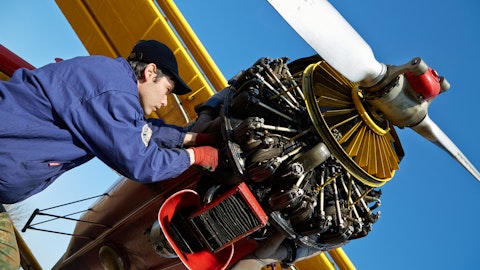Robert Spingarn: Okay, fantastic. Just quick one, maybe this — Sean, this is for you. But the margins in the quarter are a little bit softer than the prior quarter. And I think you’d been calling for them to be about the same. Is there anything behind that?
Sean Gillen: Yes, and I think if you take a look at some of the segments detail, that’s in the release as well as the Q that’ll come out, I think margin still really strong performance, significant improvement from the prior year period. But as you mentioned, sequentially, a slight decline and a lot of that came in parts, which was relatively consistent with the prior year quarter, which is down slightly, that it’s — that’s just a mix of a really strong Q4 that finish last fiscal year and then what we saw on this quarter.
Robert Spingarn: Okay, appreciate that. Thanks for the color.
John Holmes: Okay. Thanks, Rob.
Operator: Thank you. Please stand by for our next question. Our next question comes from the line of Michael Ciarmoli with Truist. Your line is open.
Michael Ciarmoli: Hey, good evening, guys. Nice results. Thanks for taking the question.
John Holmes: Thank you.
Michael Ciarmoli: John, maybe just back to Rob’s question, just looking into second quarter guidance, I think you said mid to high teens year-over-year. I don’t think you said anything sequentially. I know first quarters usually seasonally weaker, but that kind of implies maybe sequentially flattish, or just up slightly. I mean, is it just — can you give any more color on maybe how we should think about 2Q and seasonal trends if they were as present this quarter as normally?
John Holmes: Sure. Great question. We [indiscernible] expect up slightly, sequentially. And as it relates to seasonality, we’ve seen this now, the coming out of COVID where, if you recall pre-COVID, we definitely would see a pretty meaningful drop from Q4 to Q1. We obviously did not see that this quarter and we’re very proud of that. And it had been less severe last year than it had been in prior years. And the reason for that is we really worked with our customer base in the hangars to level [indiscernible] with the operation. And we’ve also continued to refine the number of customers that we work with in our hangars. But the airlines even though they want their aircraft as much as possible to be in the air during the summer, they recognize that to keep work going, to keep the workforce around, given the labor supply constraints, it’s best for everybody.
And so we do expect continued slight seasonality going forward, but not to the degree that we would have seen prior due to the changes I just mentioned.
Michael Ciarmoli: Got it. Got it. That’s helpful. And then maybe John just I think you mentioned a slowdown in landing gear. Can you maybe elaborate on that comment a bit? I don’t think I caught it all.
John Holmes: Yes, gear are on a — and obviously our MRO businesses at hangars, which we pay a lot of attention to what’s component repair, and it’s landing gear, those are the three main activities obviously dominated by hangar, but those other two are meaningful as well. The landing gear business is on roughly a 10-year cycle and gear come off at intervals over their lifetime for overhaul. And we are coming kind of on the other end of what had been a pretty significant overhaul cycle for the customers that we serve. So that business is in a forecast — is in a bit of a decline right now just based on the natural cycle for these overhauls. That’ll last for a period of time and then it’ll pick back up. But that was — obviously some slight softness inside of repair and engineering that we wanted to highlight.




